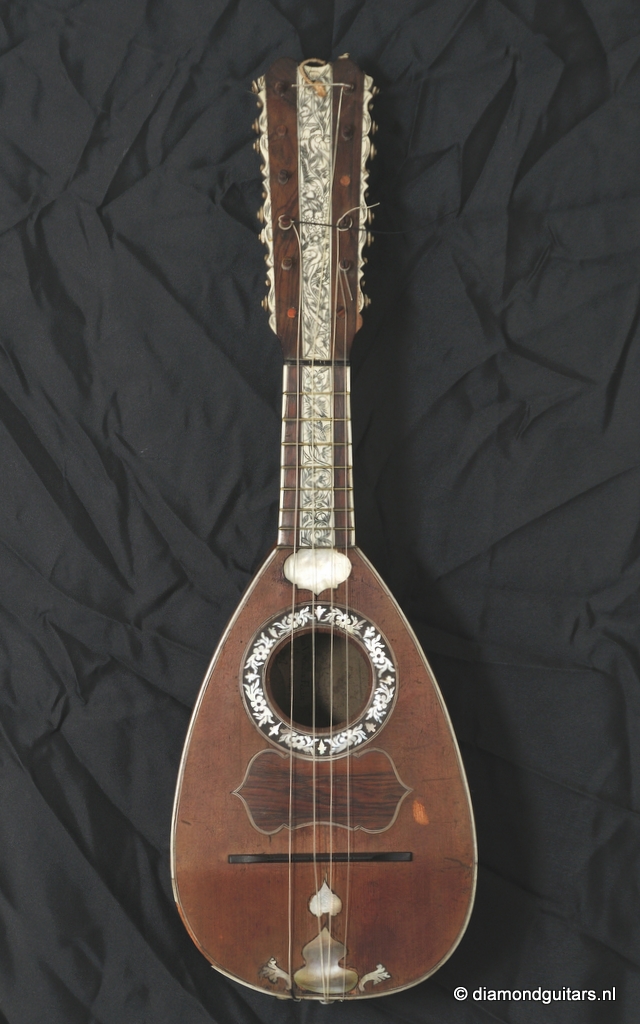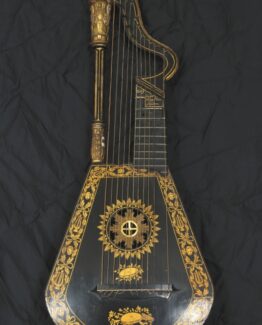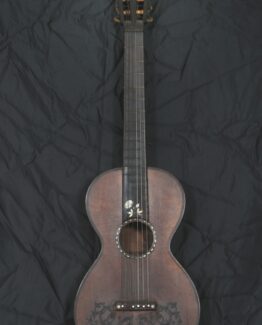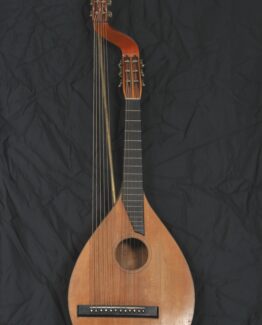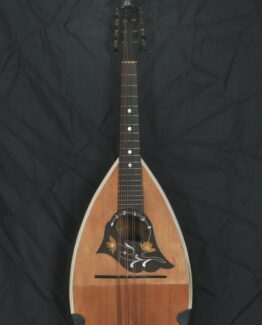Description
This collection of 3 historic mandolins represents a fascinating transitional period: the baroque mandolin (gut-strung, often 4–6 courses) was giving way to the Neapolitan mandolin (metal-strung, with plectrum technique), and the instrument was spreading across Europe.
The mandolin family grew out of the Italian mandola and earlier lutes. By 1760, two main types coexisted: the Baroque mandolin (gut strings, fingered like lute or guitar) and the Neapolitan mandolin (metal strings, plectrum technique). The Neapolitan style quickly became dominant, especially in Naples, Rome, and later Paris. The mandolin was fashionable among aristocrats and in opera orchestras, but also popular in street music.
The Baroque Mandolin used 4–6 double courses (gut strings). Tuning: Often in fourths (like lute/mandola) or in fifths. Technique: Finger-plucked or with a quill; softer sound. struction: Bowl back, flat soundboard, tied gut frets. The Neapolitan Mandolin was the emerging Standard with 4 double courses (metal strings) and tuning in fifths, like the violin (G–D–A–E). Composers writing for mandolin were Giovanni Battista Gervasio (Neapolitan school) and Giovanni Giuliano. Vivaldi (earlier, c. 1720s) but his Mandolin Concerto RV 425 was still influential and J.C. Bach and Hummel slightly later, but mandolin present in court music. Mandolin featured in operas, serenades, and chamber works in Naples and Vienna.

